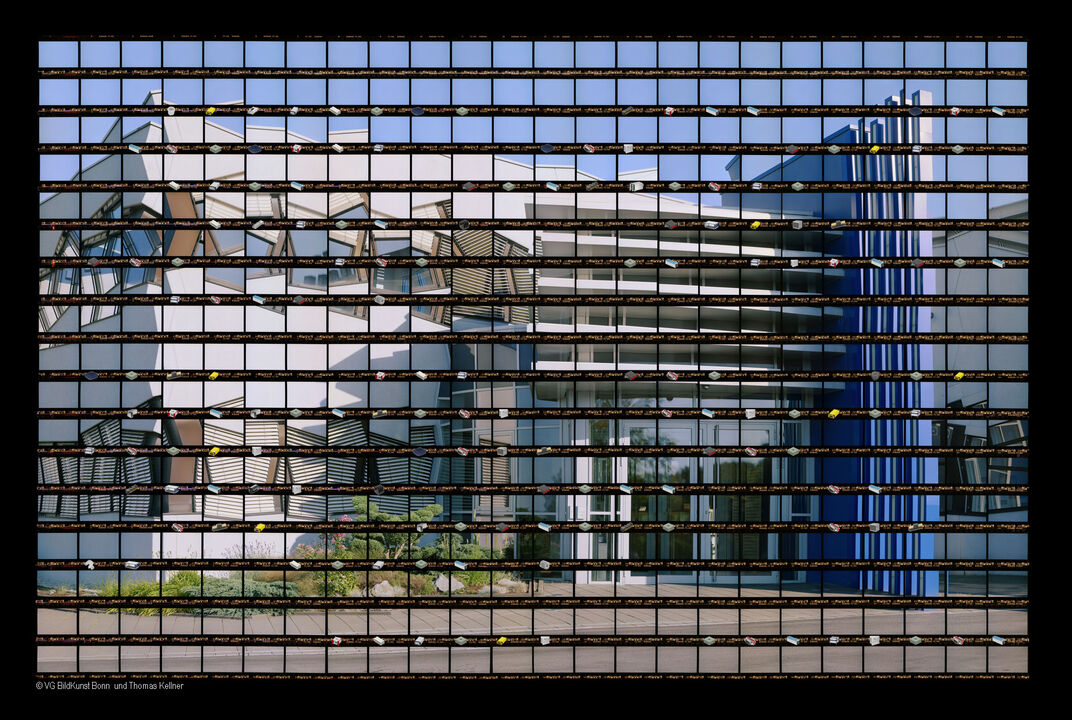
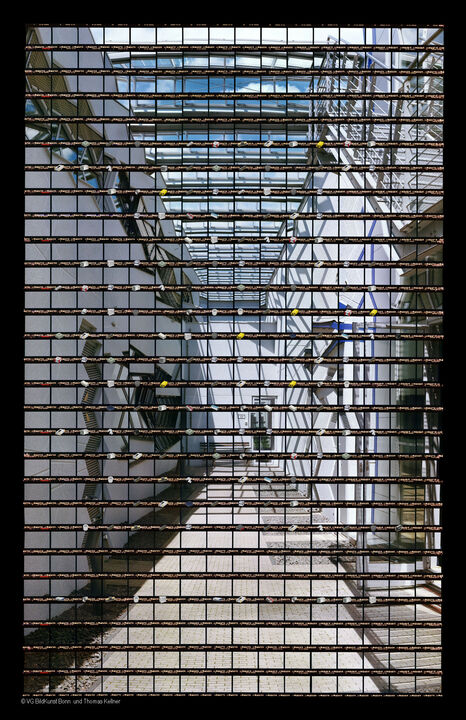
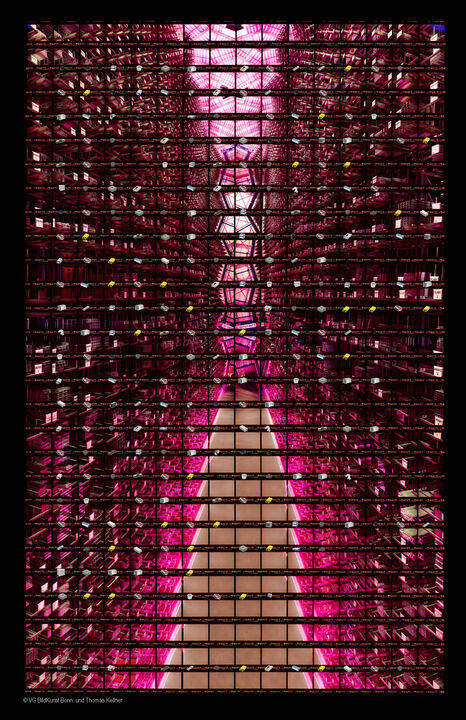
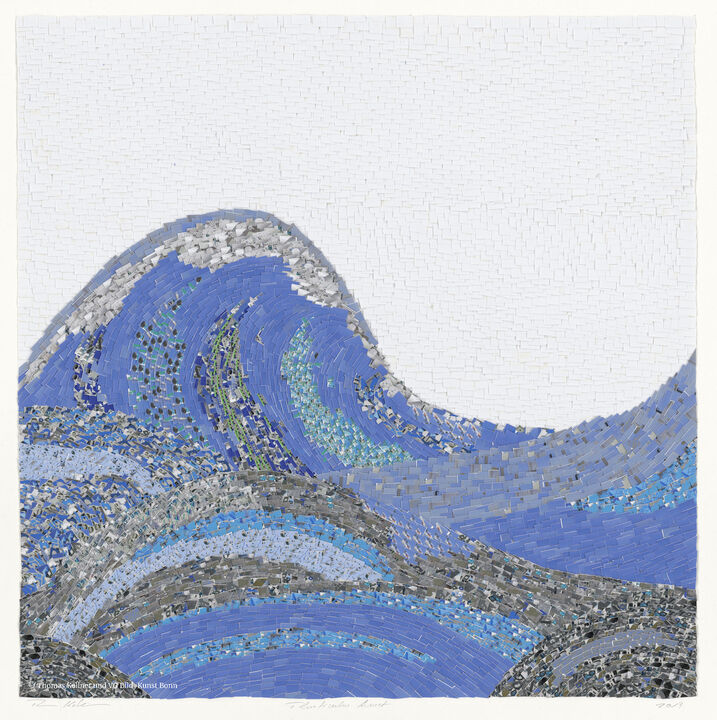
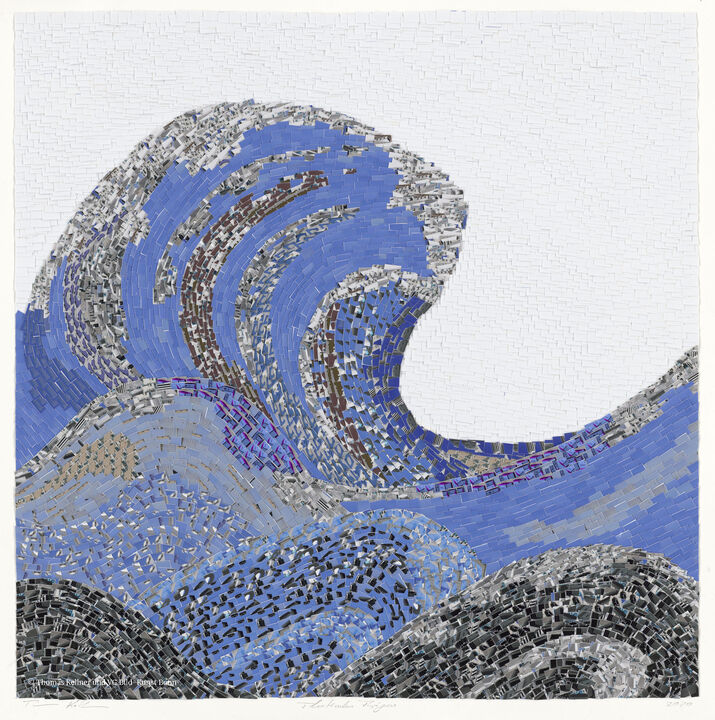
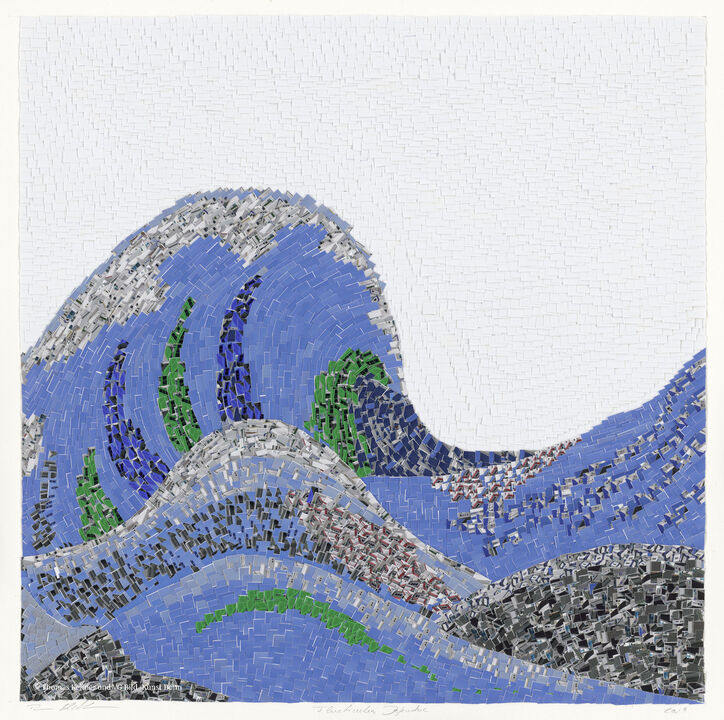
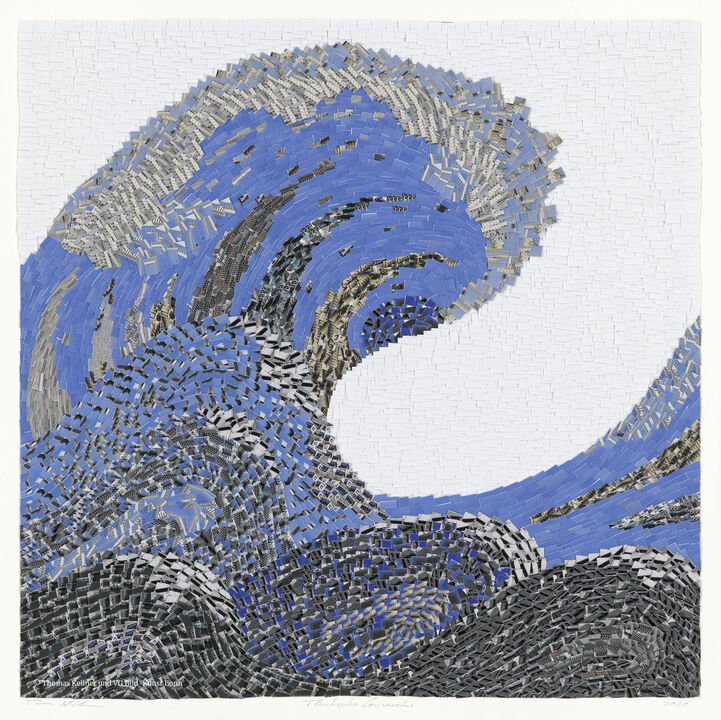
The Oeuvre of Fischer and Thomas Kellner
The seven unique works, created in the collaboration of Thomas Fischer and Thomas Kellner, reflect Kellner’s technology, which is characterized by cubism and deconstructivism, as well as the individual product groups of Fischer Elektronik and the facets of the company building. Thomas Fischer, who is not only the managing director of Fischer Elektronik but also an art collector, and the artist developed quotation artworks that follow the concept of cryptography alongside Kellner’s unique, architecturally shaped photographic art, which can only be seen by a closer look.
The three artworks
In Albert Einstein’s artwork, the viewer first loses himself in the surface of the image. Through the use of contact sheets and the special positioning of his camera, Kellner creates a completely new, vivid image of the headquarters of Fischer Elektronik. The unusually straight entrance door, which stands out from the fluctuating facade, is striking. The window fronts stand out from each other because the lower front is closed, while the upper one is exposed. Here too, Kellner plays with the reflection of the windows, so that the movement in his work of art gets a kind of flow that can only be interrupted at the straight entrance. Even the bed planted with green plants seems untouched, so that the window fronts stand out from the ground that has remained in balance and in fact only the building seems to be moving. With the shadows of the canopy in the entrance, the artist forms an ascending arc to the upper edge of the blue, seemingly fluted partition wall, where the arch falls steeply again and offers the viewer a parabolic image of the entrance. Individual points stand out between the contact sheets, which can be identified on closer inspection as electronic articles by Fischer Elektronik. The special arrangement of the particles is reminiscent of cryptographic language, which the viewer has to decipher.
In another piece of corporate art with Fischer Elektronik, an escape angle is presented to the viewer in the narrow, yet sunlit corridor in the outdoor area of the company headquarters Fischer Elektronik in Luedenscheid, Germany. Here Thomas Kellner works again with the movement of the window fronts, as if the statics around them were unaffected by the trembling impulses. At the top right there is a metallic staircase whose railing is the counterpart to the jagged lines of the window openings. Noticeable is that the artist still maintains an almost straight-line flight angle that runs towards an inconspicuous - and therefore conspicuous - white wall. At a second glance, the viewer is struck by the individual parts from the Fischer Elektronik product groups, which he first has to decipher in order to understand the message behind the electronic items hidden between the 448 individual shots.
The last artwork in the cryptographic series is - similar to the second - the recording of an escape angle. Through the middle of the screen running stripes, which are the ceiling and corridor of Fischer Elektronik's immensely large warehouse. The many storage shelves shine in reddish to bright pink tones, from which the floor of the corridor stands out in a softer and lighter beige. Remarkable are the bright yellow electronic articles from the firm, which were inserted between the contact sheets as parts of a code.
For the first time in this series, the artist painstakingly incorporates deciphering and cryptography into his artworks. The deep connection between the small electronic parts and Kellner's unmistakable signature, which is the fascinating result of the successful corporate art between Fischer Elektronik and the artist, can be identified as the progress of Thomas Kellner's artistic development.
The four waves
The Fischer Waves created in the flucticulus series are bursting with the core messages of the overall project: movement, change and strength can be found in the ever-growing wave combs that threaten to overturn. Kellner develops a link between electronic particles and the aesthetic water landscape and tells a story characterized by abstract changes.
The name amet, lat. warm, bearing, the first of the four waves consists of photographs of the product group thermal conductive material from Fischer Elektronik. In front of the radiant white background, striking areas of colour emerge in a variety of grey, blue and green tones. From a closer look, circular and oval materials can be seen, which form a strong contrast to the rectangular collage elements.
The striking, deep blue and bright green arches in the second wave offer the viewer a new, more dynamic image of the Fischer waves. The title frigus (lat. cold) identifies the individual heatsink parts that Thomas Fischer himself describes as "aesthetic" (Thomas Fischer, Personal Korrespondenz, Luedenscheid, Germany, 10. July 2020). With a variety of geometric forms, the artist develops an exciting twist in the quartet.
The captivating green of the first two works suddenly disappears in the work of art named defendere, lat. defend or protect. Different shades of grey and blue form the permanent constants of the Fischer waves. Kellner interrupts the previous choice of colours with individually scattered, bright lilac tones that abstract the naturally appearing image of the four waves. A kind of restlessness is designed with the help of the formative irregularity of the housings.
Only the different shades of grey and blue form a constant continuation in the last work of art conjunctus. The dark gray connectors used in the lower half of the image create an emotionally charged reversal and dominate and displace the previous variety of colours of the four artworks. Instead, golden splashes of colour flash out of the sublime wave, which show the observing individual and bursting, awe-inspiring appearance.
From artwork to artwork, the inflating waves become higher. By means of incredibly detailed colour and product differences, Kellner adds another movement to the four-part series, which gives the viewer an idea of the immense floods of technology. In his unique commissioned work, the artist breaks with his previous architectural photography, which is characteristic of him, and changes the relevance of aesthetic landscape representation to reality through industrially manufactured individual parts, which give abstraction to his artwork. Kellner discusses and interprets the extremes of technological progress in an incomparable way and achieves a turning point from architectural buildings to collage works made of small individual items in his flucticulus series.
Contact
Fischer Elektronik GmbH und Co. KG
Nottebohmstrasse 28
DE 58511 Luedenscheid
Germany
+49 23514350
info@?fischerelektronik.de
www.fischerelektronik.de
Links for Fischer Elektronik
Author
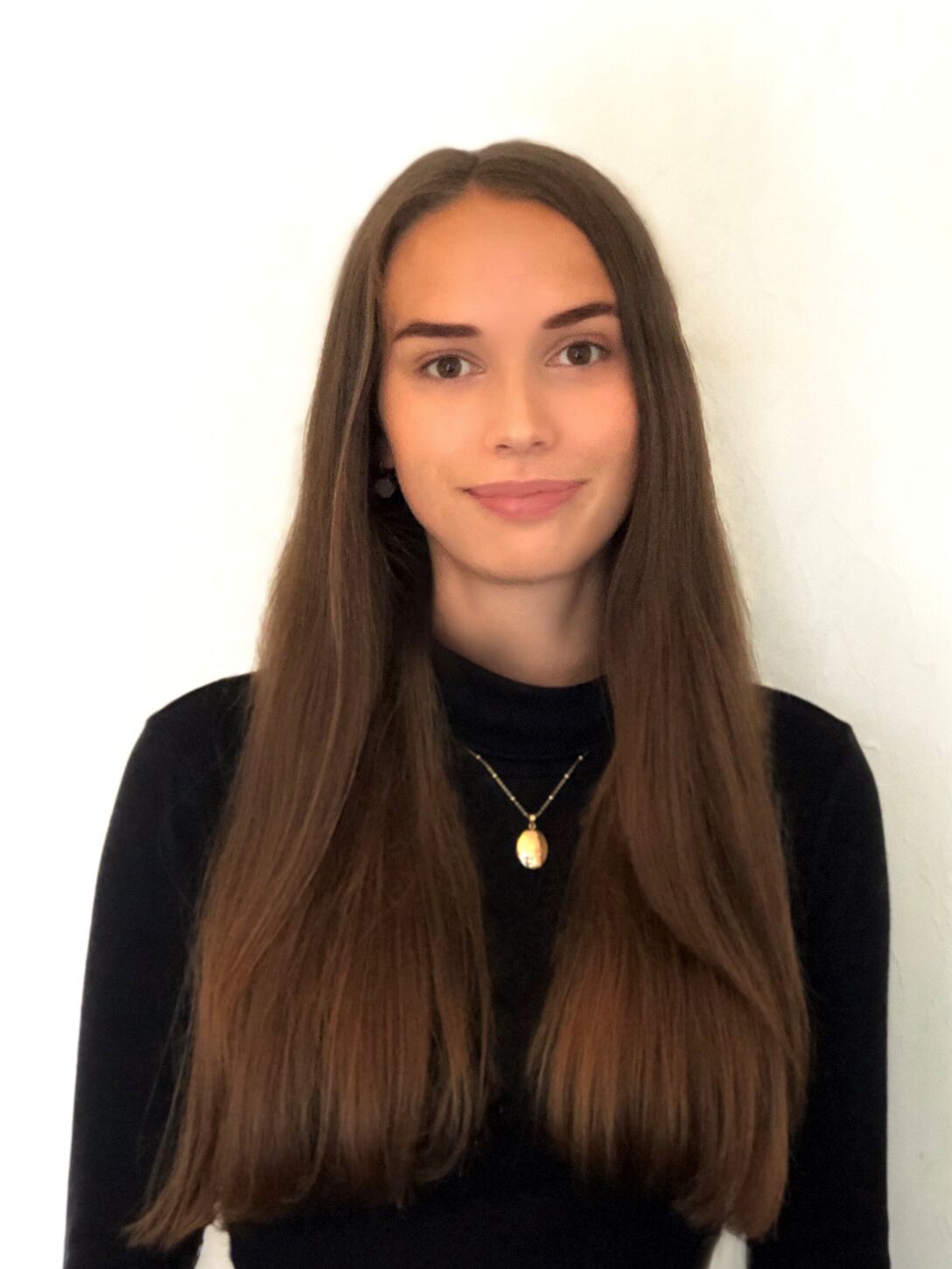
Christina Kaiser, born September 6, 2000 in Siegen
Studies:Media Studies with Management and History
Internship: 2020 at studio Thomas Kellner
Special interests: history, politics, literature, culture, ballet, photography and volleyball
Goals: To become a writer








